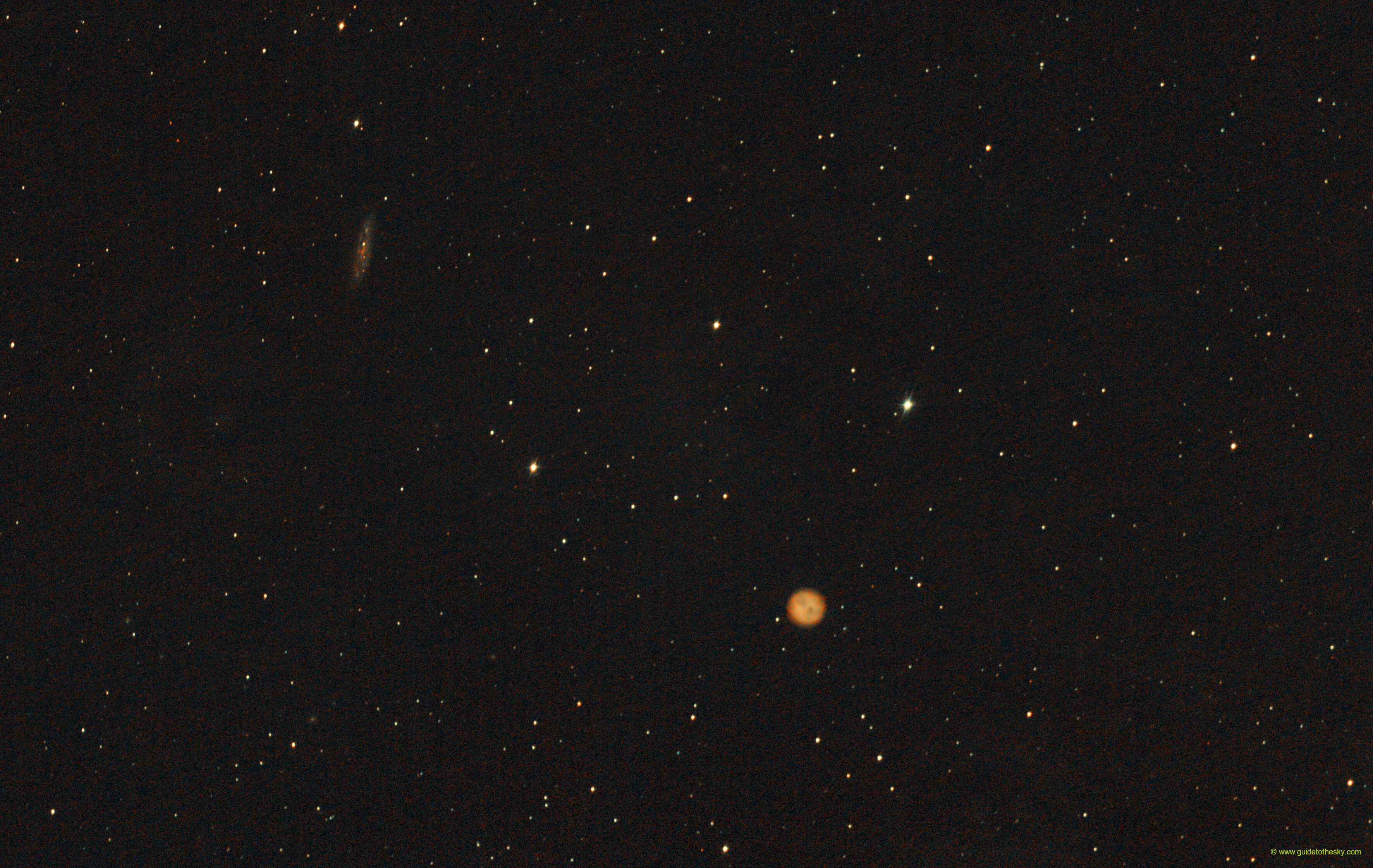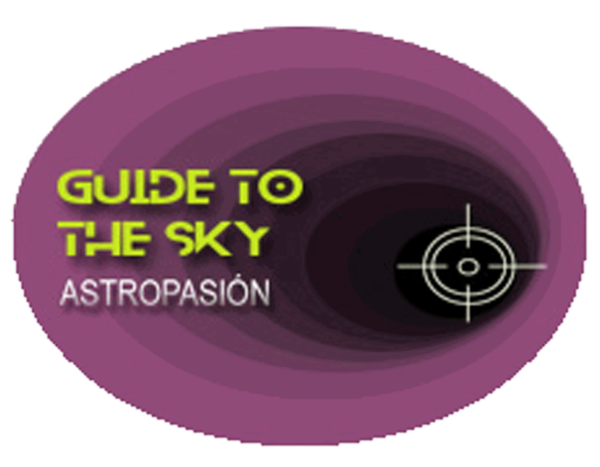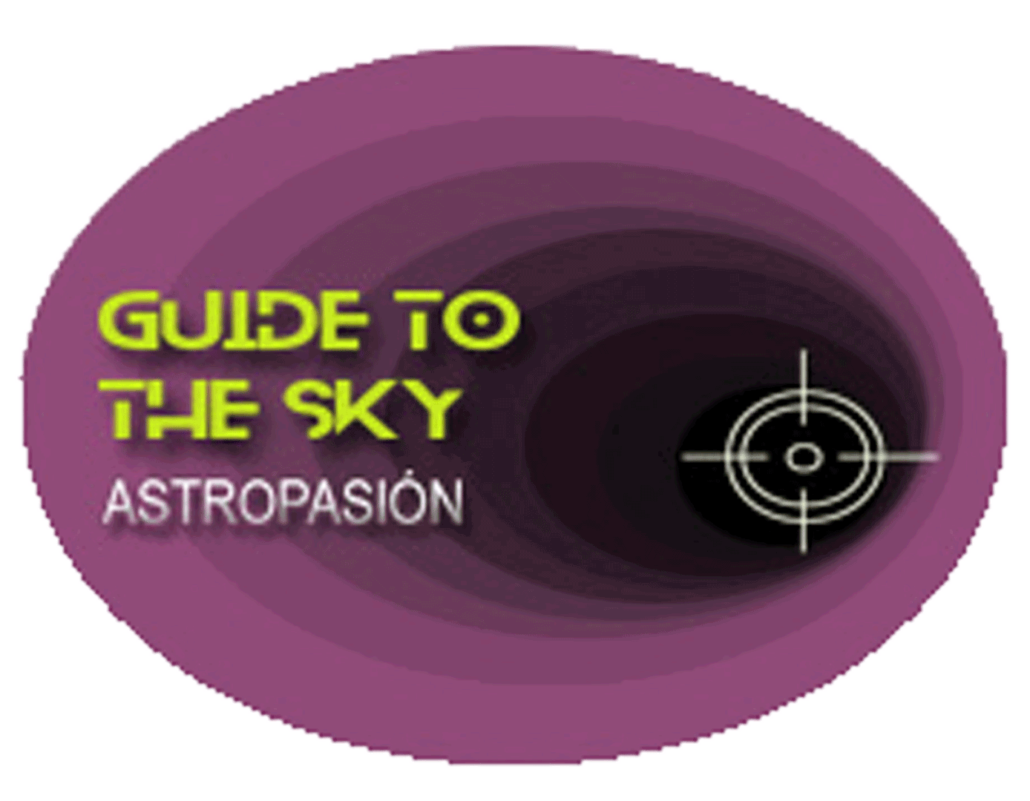Messier 108 - Ursa Major

Es difcil apreciar su estructura espiral, ya que se nos muestra en un ángulo muy oblícuo respecto a nuestra línea visual, aunque sí podemos apreciar sus regiones de polvo junto con las regiones HII de la galaxia.
Es una galaxia de un llamarivo color rojizo y 1.5º al SW de M109 es muy probable que podamos encontrar M97, la Nebulosa de Búho, una planeraria que merece una página a parte.
Para terminar diremos que M108 brilla con una 10.5 Magnitud a {{ object[0].M108.mesDistances[0].dist }} {{ object[0].M108.mesDistances[0].unit }} de distancia.
M108 - Galaxia de la tabla de Surf - en la IA
Messier 108 (M108), also known as the Surfboard Galaxy, is a barred spiral galaxy located in the constellation Ursa Major. Here's a summary of key information about it:
Key Features and Characteristics:
- Type: Barred Spiral Galaxy (Type Sc)
- Location: Ursa Major (about 45 million light-years away)
- Discovery: Pierre Méchain in 1781
- Distance: Approximately 45 million light-years from Earth.
- Size: Roughly 87,000 light-years in diameter, which is slightly smaller than our Milky Way Galaxy.
- Appearance: Viewed nearly edge-on from our perspective, giving it a flattened, "surfboard" appearance. It shows a prominent disk with dark dust lanes and a bright, knotty structure with many H II regions (regions of ionized hydrogen gas where active star formation occurs).
- Star Formation: M108 exhibits a high rate of star formation, characterized by its numerous H II regions and relatively blue color.
- Central Supermassive Black Hole: M108 is thought to contain a supermassive black hole at its center, with an estimated mass of around 24 million times that of the Sun. This is determined by studying the motion of gas and stars in the galactic core.
- Companion Galaxies: M108 is part of the M81 Group of galaxies, a gravitationally bound group that also includes the famous Bode's Galaxy (M81) and Cigar Galaxy (M82). It interacts gravitationally with these and other galaxies in the group.
Observational Information:
- Magnitude: Around magnitude 10.0, making it a challenging object for small telescopes but readily visible with moderate to large amateur telescopes.
- Best Viewing: Best observed during the spring months when Ursa Major is high in the northern sky.
- Coordinates (J2000):
- Right Ascension: 11h 11m 31.3s
- Declination: +55° 40′ 31″
- What to Look For: Through a telescope, look for an elongated, hazy patch of light. Dark lanes and knots of star formation can be seen with larger apertures and good seeing conditions.
Significance:
- Studies of Galaxy Evolution: M108 is a valuable object for studying the structure, dynamics, and star formation processes within spiral galaxies.
- Black Hole Research: The supermassive black hole at its center is a subject of study for understanding the growth and activity of black holes in galactic nuclei.
- Galaxy Group Dynamics: Its membership in the M81 Group provides insight into the gravitational interactions and evolution of galaxies within groups.
Overall, Messier 108 is a fascinating and well-studied barred spiral galaxy that provides a window into the processes shaping galaxies in the universe.
Más información sobre Messier 108 en NASA/IPAC.
Mapa alrededor de Messier 108
Otros identificadores de M108:
"ILT J111134.75+554042.2" ,"[HSN2016] J167.87+55.67" ,"2MFGC 8733" ,"AAVSO 1105+56" ,"IRAS 11085+5556" ,"IRAS F11085+5556" ,"ISOSS J11116+5540" ,"K73 469" ,"LEDA 34030" ,"LJHY 8" ,"M 108" ,"MCG+09-18-098" ,"NGC 3556" ,"TC E17" ,"TC 917" ,"UGC 6225" ,"Z 268-1" ,"Z 267-48" ,"[SLK2004] 604" ,"[VDD93] 128" ,"2MASX J11113096+5540268" ,"Z 1108.5+5556" ,"[CHM2007] LDC 867 J111130.96+5540268","[M98c] 110836.8+555633" ,"UZC J111131.2+554025" ,"PSCz Q11085+5556" ,"SDSS J111131.06+554027.4" ,"BWE 1108+5556" ,"GB6 B1108+5556" ,"NVSS J111130+554027" ,"WB 1108+5556" ,"87GB 110837.4+555624" ,"WN B1108.6+5556" ,"6C 110835+555638" ,"7C 110836.79+555641.00" ,"[CAB95] IRAS F11085+5556" ,"[NKB95] N3556" ,"SDSS J111130.83+554027.5" ,

